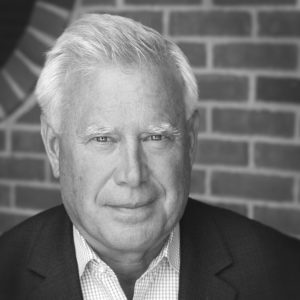In May, McGraw Hill published a blog written by our very own Jim Haudan and Rich Berens. It features their new book, What Are Your Blind Spots?: Conquering the 5 Misconceptions that Hold Leaders Back, currently available on Amazon. If you haven’t read the book yet, now’s the time – especially if you’re a leader or aspiring leader. Why? It discusses some of the most prevalent leadership blind spots that might just have something to do with the depressing employee engagement stats, which have been plaguing our workforce for way too many decades. So, if you’re hoping to be an organization that stands apart because of strong engagement scores, this book offers actionable, real-life tactics to start making positive changes today. Without further ado, read on to see what debuted on the McGraw Hill blog. And if that whets your appetite, you can get more info on the book here.
5 Leadership Blind Spots That Perpetuate Disengagement & Indifference
Jim Haudan, CEO, and Rich Berens, President and Chief Client Fanatic, of Root Inc. detail 5 leadership blind spots that hinder employee engagement and innovation in the workplace.
It often takes years for new insights to take hold and drive new behaviors. Take the research that linked smoking to cancer, or the connection between sugar-filled carbonated drinks and obesity. What might ultimately become obvious, isn’t always clear at first. But, if you take the time to reconcile data with reality, you will embark on a trajectory of profound change.
We have reached that threshold in how we view work. Something isn’t adding up and it’s time to get very clear on what we’ve been overlooking for so long. After all, there has to be a reason why our nation’s dismal engagement rates have remained unchanged for decades, right? A work environment that only engages 30 percent of its human talent is a social challenge of the highest order—not just an organizational inconvenience. Everyone should have a right to do noble work, and the opportunity to do that work in an environment where they can bring their best.
The fact that levels of employee engagement haven’t improved in 30 years suggests that something must change. We need to admit that work is broken.
It Starts with Our Beliefs
Many of our current leadership beliefs and approaches date back to the industrial age! And, as we all know, old habits die hard.
Today we are clearly past the industrial age, and are somewhere between an information age and an experience economy. Our people are motivated by what they feel, what they experience, and what they want to join. Yet, many of the beliefs from the industrial age have us directing, telling, and scripting what our people need to do. It is incumbent on all of us to “awaken the sleeping giant” of human potential represented by the 70 percent of people not engaged in the workplace today.
To that end, we’ve identified five leadership blind spots that perpetuate disengagement. Yes, leaders have been functioning with blind spots, due to long-standing beliefs and approaches, and therefore have been held back from having the most enlightened view of how to lead people most effectively. You can’t point the finger at your people. These blind spots are holding us back from creating thriving innovative workplaces that turn customers into advocates and fans.
The Top Five Leadership Blind Spots
To help leaders break free from the obsolete traditions holding our workplaces back, here are five blind spots keeping your people on the bench and suggested tactics that will help align work with modern day society.
Leadership Blind Spot #1: Purpose matters, but it doesn’t drive our numbers.
Today’s Reality: Let’s be honest. We all go to work to get paid. But the historic equation between management and labor was one of pay-in-return for a specific set of tasks—no questions asked.
The most enlightened leaders understand that today’s workforce wants to work for an organization they believe in and want to be part of something bigger than themselves. That larger purpose not only creates a greater connective fabric, but becomes an economic driver of success in how it informs strategy, behaviors and actions.
Leadership Blind Spot #2: We have a compelling story to tell that our people care about.
Today’s Reality: Most organizations have a semi-generic vision statement, accompanied by what seems like too many slides to outline their strategy for what winning looks like for the organization.
Leaders might have a very compelling story to tell, but when seen through the eyes of the employee, the complete opposite is often the case. Great leaders understand how to craft a strategy story that resonates with their people and meets them where they are at.
Leadership Blind Spot #3: Rational and logical presentations engage the hearts and minds of people.
Today’s Reality: In many organizations, a tremendous amount of money is spent creating strategies to win. Those strategies get communicated using PowerPoint presentations, roadshows or town hall meetings…but employees fail to connect with the strategy, leaving leaders frustrated about the lack of progress, and managers struggling just to hold the ship together.
Leaders need to move from presentations to conversations to create genuine engagement and involve people more meaningfully in the role everyone plays in winning as an organization. Today’s best leaders understand that their words alone will not engage the hearts and minds of their people, only the fire of conversation where everyone is given the opportunity to think together on the most important issues of the organization will.
Leadership Blind Spot #4: People will not do the right thing unless you tell them what to do and hold them accountable to do it.
Today’s Reality: Most organizations realize customer experience is one of their most critical differentiators. Yet, they try to control the customer touch points through tight processes, scripts, and routines that minimize variability. That approach creates consistency, but it prohibits unique, differentiated, and personalized experiences that will allow a business to stand apart from the rest.
Employees need the freedom to be their best, authentic selves with support from the leadership team. Great leaders create a framework that clearly outlines the non-negotiables everyone needs to work within and beyond that invests heavily into inspiring individuals to let their personalities shine to create extraordinary experiences for customers. To achieve extraordinary results, leaders need to trade control for trust.
Leadership Blind Spot #5: My people feel safe telling me what they really think and feel.
Today’s Reality: Many leaders feel that the environment they have created encourages open, honest and transparent conversations when in many instances the opposite is the case. People don’t feel comfortable telling the truth because they don’t think it is smart or safe to do so and often only reveal their true feelings in the hallways, bathroom, and at the water cooler. The natural hierarchies and power structures in organizations makes truth-telling difficult.
Great leaders need to work diligently to create an environment where it is safe to tell the truth and where constructive conflict is embraced. They lead with vulnerability and constantly role model courageous, empathetic and honest conversations. Are you ready to eliminate your blind spots?
We live in a time of rapid change. A time of ultimate transparency and information flow. A time where a new generation of workers is asking, demanding, and creating a different relationship with their employers. There will be two types of companies in this world. Those leading the transformation of work and those that trail and follow. Which direction will you choose?
Jim Haudan and Rich Berens are the authors of the upcoming book: What Are Your Blind Spots?: Conquering the 5 Misconceptions that Hold Leaders Back.
Jim Haudan is a different kind of CEO, with a passion that goes beyond leading Root, a change consulting company, to success. For more than 25 years, he has been helping organizations unleash hidden potential by fully engaging their people to deliver on the strategies of the business. Jim is a frequent speaker on change management, leadership alignment, employee engagement, and business transformation. He also contributes regularly to business publications and blogs.
For more than 10 years as president, Rich has had the opportunity to lead Root and its artists, designers, researchers, programmers, and MBAs in creating breakthrough approaches to change that have reached millions of people around the world. Rich is a frequent author, thought leader, and speaker on the subject of leadership, transformation, and how to create lasting change.






